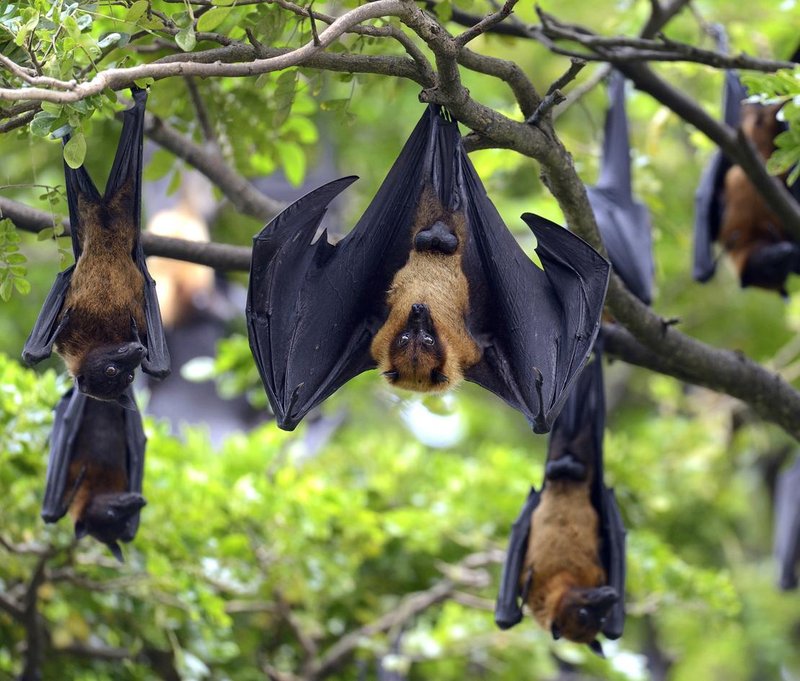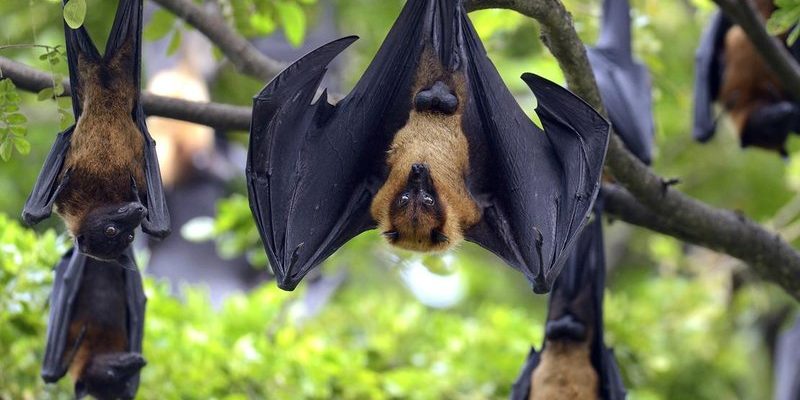
Think of fruit bats as nature’s snackers. They are vital for pollination and seed dispersal, making them key players in their ecosystems. However, like any wild animal, fruit bats have their quirks and can stir up concern among humans. By the end of this article, you’ll have a better understanding of whether these bats should really be on your radar for danger.
What Are Fruit Bats?
Fruit bats are large bats that belong to the family Pteropodidae. Unlike their nocturnal cousins that feast on insects or blood, fruit bats are primarily herbivores. They mostly eat fruits, flowers, and nectar, which makes them crucial for many ecosystems.
These bats can have wingspans up to 6 feet, depending on the species! That sounds scary, doesn’t it? But honestly, they aren’t out to get you. They live in tropical and subtropical regions, often roosting in large colonies. Their social nature is fascinating—they communicate through various sounds and can even recognize one another.
One of the most recognized species is the Giant Golden-Crowned Flying Fox, which is notable for its impressive size and striking appearance. While their looks can be intimidating, they tend to stick to their fruits rather than humans.
Do Fruit Bats Carry Diseases?
You might have heard some stories about bats being linked to diseases, like rabies and, more recently, their connection to viruses like Ebola and coronaviruses. It’s true that some bats can harbor these diseases, but the risk of getting infected from fruit bats is quite low for humans.
Let’s break it down:
- Rabies: Like most mammals, fruit bats can carry rabies. However, the disease is rare in fruit bats compared to other species. In the U.S., for example, rabies cases are more commonly reported in other bat families.
- Ebola: While fruit bats have been identified as potential carriers of the Ebola virus, direct transmission to humans is very rare. Infection usually occurs from contact with infected animals, not from casual encounters with bats.
- Coronaviruses: Fruit bats are considered natural reservoirs for many coronaviruses. However, transmission to humans usually requires intermediate hosts like other wildlife.
So, here’s the thing: While it’s wise to be cautious, especially if you come into contact with bats, the chances of getting sick from fruit bats are much lower than you might think.
Are Fruit Bats Aggressive?
You might picture a fruit bat swooping down to attack, but it’s helpful to remember that these bats are generally not aggressive. They’re shy and prefer to avoid human interaction whenever possible. In fact, most fruit bats will fly away if they sense a human nearby.
That said, they can get defensive if they feel threatened or cornered. Just like any wild animal, they may react by vocalizing loudly or attempting to escape. If you see a fruit bat in the wild, give it plenty of space, and you should be just fine.
Let me explain: imagine you’re at a party, and someone unexpectedly corners you while you’re just trying to enjoy your drink. You’d feel the need to either speak up or get away, right? Bats are no different!
How Can We Co-exist with Fruit Bats?
Living alongside fruit bats might sound daunting, but it can actually be a unique opportunity. These animals play a significant role in maintaining healthy ecosystems. So, how can we ensure that we coexist peacefully?
1. Avoid disturbing their habitats: If you live in an area where fruit bats are common, try to minimize disruption to their roosting sites. They need these spaces to thrive.
2. Educate yourself and others: Understanding the importance of fruit bats can help dispel myths and create a more positive view of these creatures. Share your knowledge with friends and family!
3. Support conservation efforts: Many organizations work to protect bat habitats and promote awareness. Engaging with these groups can help make a difference.
By taking these steps, we can appreciate the beauty of fruit bats while keeping ourselves safe.
What to Do If You Encounter a Fruit Bat?
If you find yourself in a situation where you encounter a fruit bat up close, don’t panic! Here’s what to do:
1. Stay calm: Take a deep breath. Remember, fruit bats are generally non-aggressive and prefer to avoid humans.
2. Observe from a distance: If possible, enjoy watching the bat without getting too close. Use binoculars to get a better look without intruding.
3. Leave it alone: If the bat seems sick or injured, it’s best to contact wildlife professionals. They can handle the situation safely.
4. Do not attempt to touch it: Even if it looks cute, resist the urge to interact. This could lead to unwanted bites or scratches. Plus, it can cause stress for the bat.
By following these simple guidelines, you can ensure both your safety and the well-being of the bat.
So, can the fruit bat be dangerous to humans? The answer is, generally, no. While fruit bats can carry diseases and may bite if threatened, they are mostly harmless creatures that play essential roles in their ecosystems.
By understanding their behavior and respecting their space, we can coexist with these fascinating animals without fear. So next time you hear a story about bats, remember the fruit bat’s delightful role in nature. They might not be the monsters from our nightmares after all! Embrace the idea that these gentle giants are more about fruits than fright—an essential part of our world.

